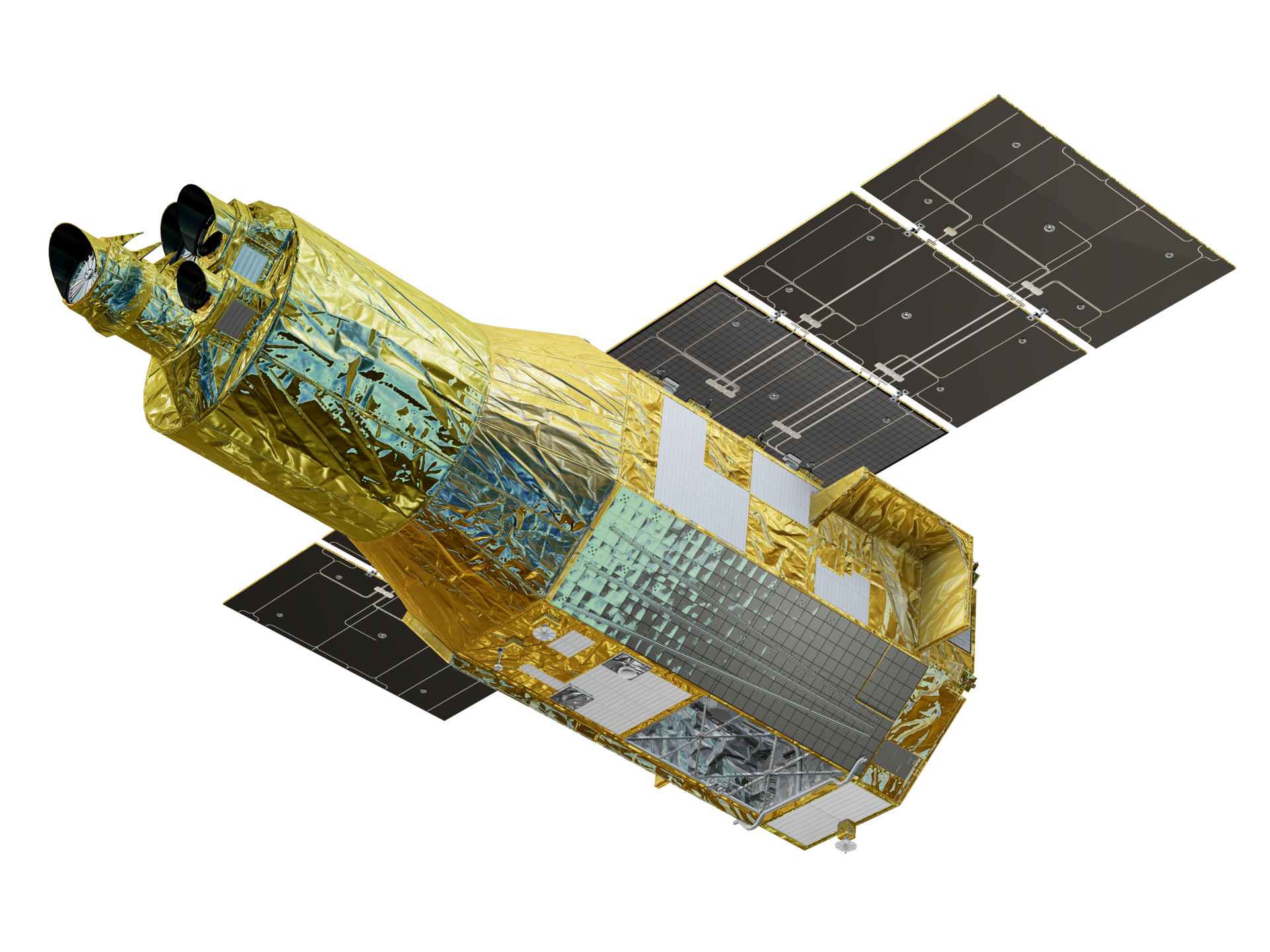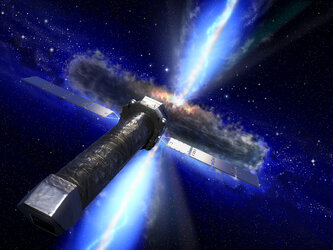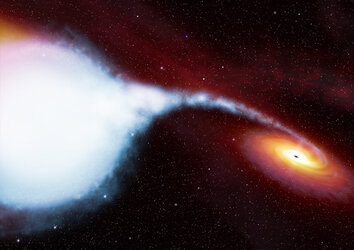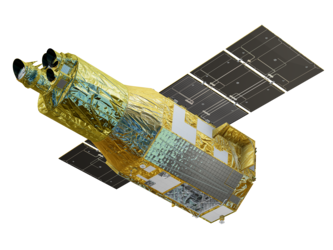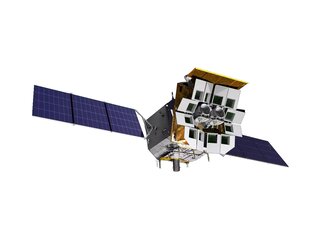XRISM factsheet
Overview of the XRISM mission
Name: The X-Ray Imaging and Spectroscopy Mission (pronounced ‘krizz-em')
Launch date: 7 September 2023
Mission theme: Studying gas in galaxy clusters, the chemical enrichment of the Universe, and extreme physics around accreting supermassive black holes.
Status: In operation
Partnership: A JAXA/NASA collaborative mission with ESA participation
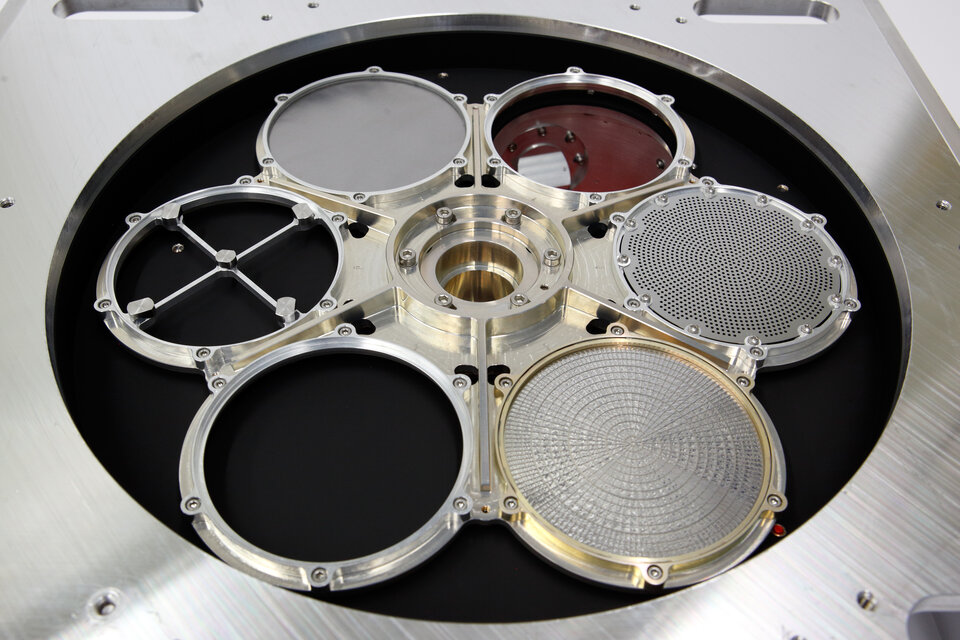
European contributions: Europe’s contribution consists of loop heat pipes for XRISM’s Resolve instrument, a star tracker (to tell the spacecraft where it is pointing), two geomagnetic aspect sensors (to measure Earth's magnetic field) and three magnetic torquers (to orient the spacecraft correctly with respect to Earth's magnetic field).
Additionally, the University of Geneva in Switzerland and SRON in the Netherlands developed a filter wheel mechanism for Resolve and electronics including high-voltage power sources and calibration sources. In consideration of these contributions, 8% of the mission’s total Guest Observing Time is allocated to ESA.
Mission objectives:
XRISM will study the Universe in X-ray light with an unprecedented combination of light collecting power and energy resolution – the capability to distinguish X-rays of different energies. The mission will provide a picture of the dynamics in galaxy clusters, the chemical make-up of the Universe and the flow of matter around accreting supermassive black holes (Active Galactic Nuclei or AGN), among many other topics.
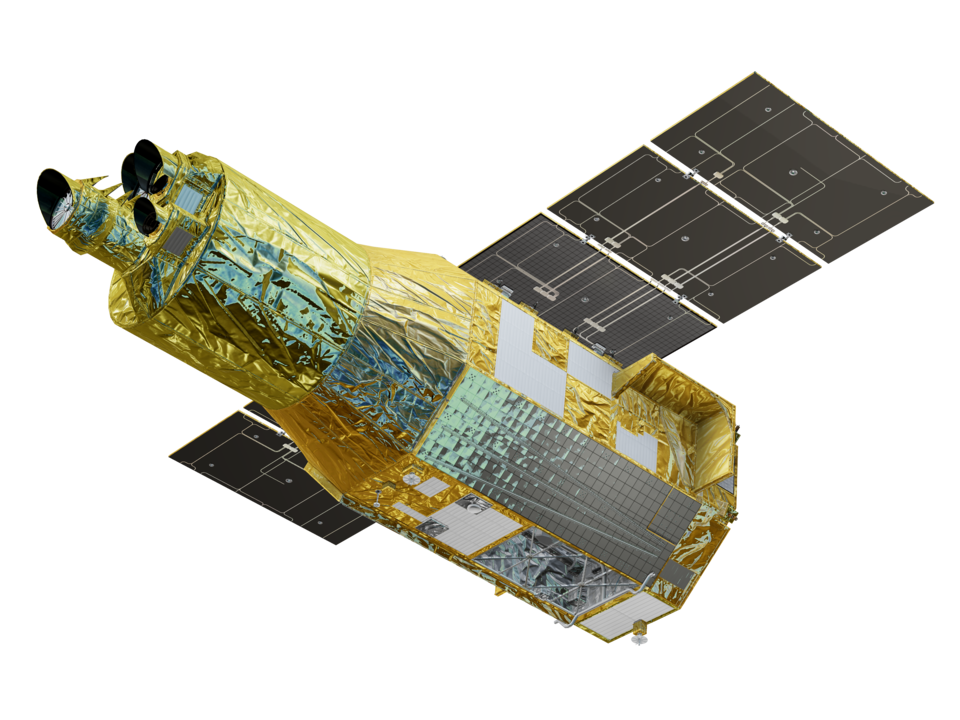
XRISM studies the evolution of the Universe by looking at its biggest building blocks: galaxy clusters. These are the largest structures in the Universe held together by gravity. They encompass thousands of galaxies in a volume comparable to that between our galaxy and our closest neighbour – Andromeda. Most of the gas in clusters has a temperature of tens of million degrees and emits X-ray light. XRISM uses this light to determine the velocities and energies in the gas. At the same time, the mission is investigating the rate at which galaxy clusters grow by measuring the total mass of clusters at different cosmic ages. This will help us understand the growth of large structures in the Universe.
When we observe the Universe in X-ray light, we can uncover the chemical elements it is made from. During the Big Bang, only the four lightest elements formed (hydrogen, helium, lithium and beryllium). All other elements formed later in stars. Stars burn lighter elements into heavier elements such as carbon, oxygen and iron. Elements heavier than iron are only formed during very energetic events, for example when massive stars die as supernovas. In the residuals left behind after the death of stars, new stars are born that are 'polluted' by the newly created elements. XRISM is studying the enrichment of the Universe with these elements and mapping the chemical evolution of the Universe. The spacecraft does this by determining the number of heavy elements present in the gas between galaxies in clusters. This gas is a remnant of the birth and death of stars over the history of the Universe.

Other energetic phenomena observable in X-ray light are active galactic nuclei (AGN). These are the regions at the centres of galaxies that host supermassive black holes, which are millions to billions time more massive than our Sun. Thanks to their immense gravity, some black holes attract matter, and the infalling material generates X-rays that XRISM can detect. What influence the gravitational pull of the black hole has on its surroundings is not yet fully understood. They are extreme gravity environments, which cannot be reproduced on Earth. XRISM is studying how matter behaves in these regions and look at material ejected at very high speed from the black holes. This may hold the key to understanding the strong relation between the growth rate of stars and growth of black holes in galaxies.
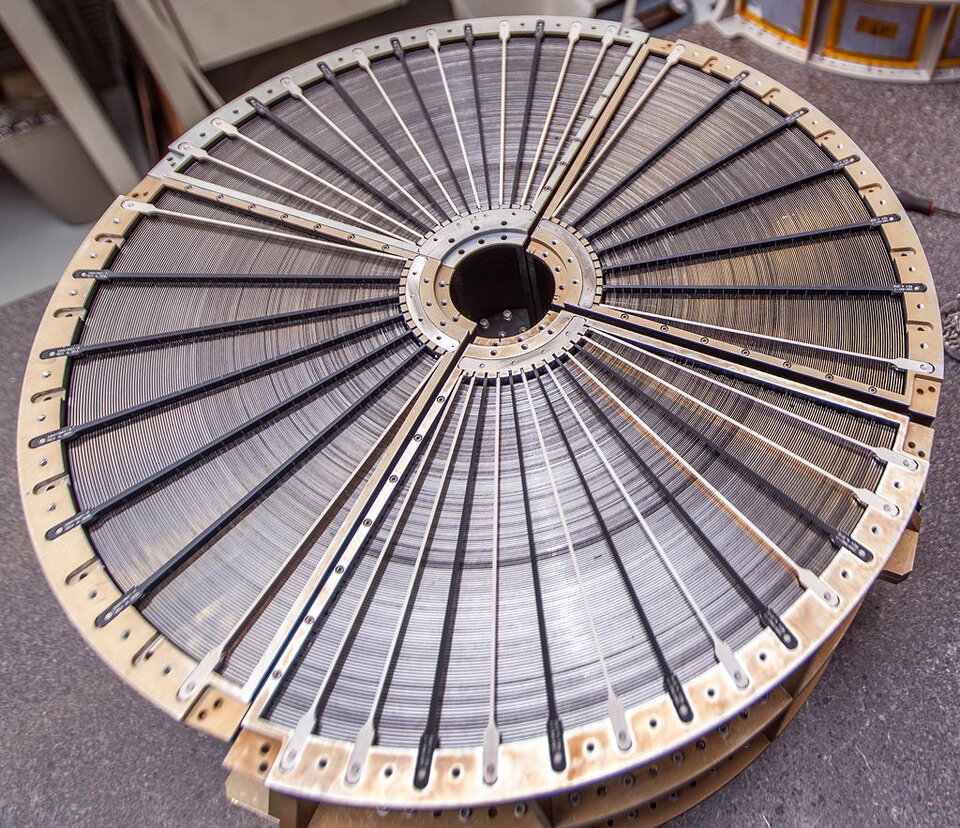
Spacecraft and instruments:
The XRISM spacecraft has two identical mirrors; these are called X-ray Mirror Assemblies (XMAs) and consist of 203 mirror foils. X-rays are not measurable with classical telescope mirrors since they pass through them. To measure X-rays, you can use a cylindrical construction of thin foils with small incident angles. The collecting area of an X-ray telescope is increased by adding many layers of those foils. Each of XRISM’s mirror assembly focuses X-rays onto a scientific instrument 5.6 m away.
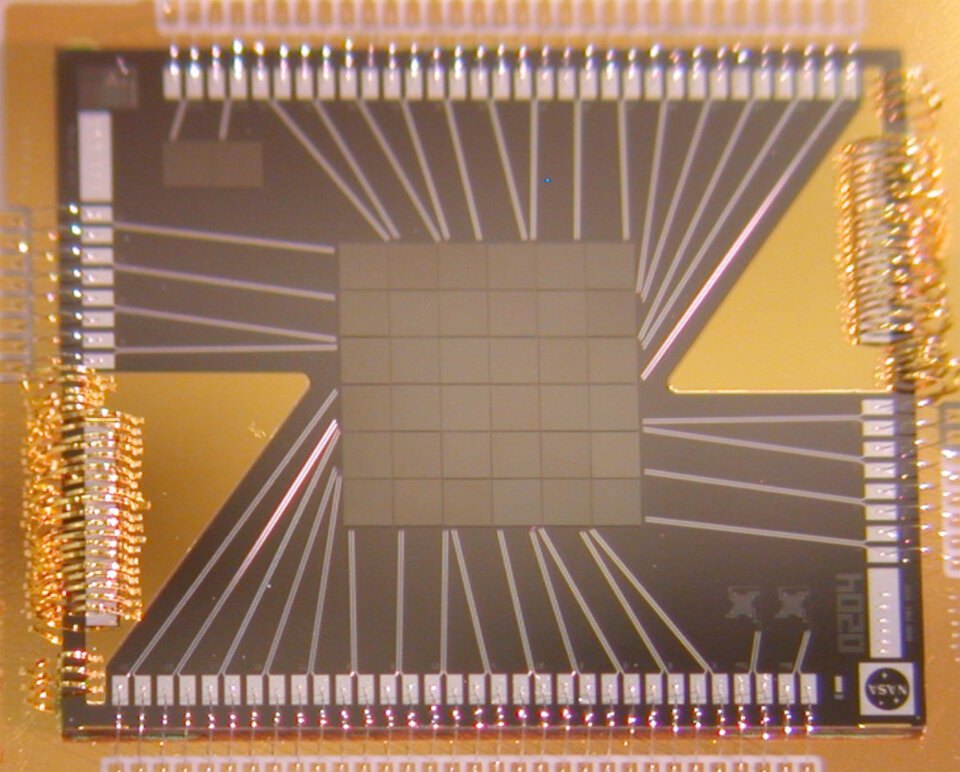
XRISM’s two scientific instruments are:
- Resolve: This X-ray spectrometer works as an X-ray calorimeter. X-ray photons that hit the detector pass on energy that warms it up. The rise in temperature changes the detector’s conductive properties. By analysing these changes, the energy of the absorbed X-ray photons can be calculated.
- Xtend: This soft X-ray imager consists of an array of four CCD detectors. The instrument extends the observatory’s field of view to one of the largest of any X-ray telescope ever flown into space, allowing XRISM to monitor nearby time variable X-ray stars, and map the properties of X-ray sources in the background of targets of Resolve.
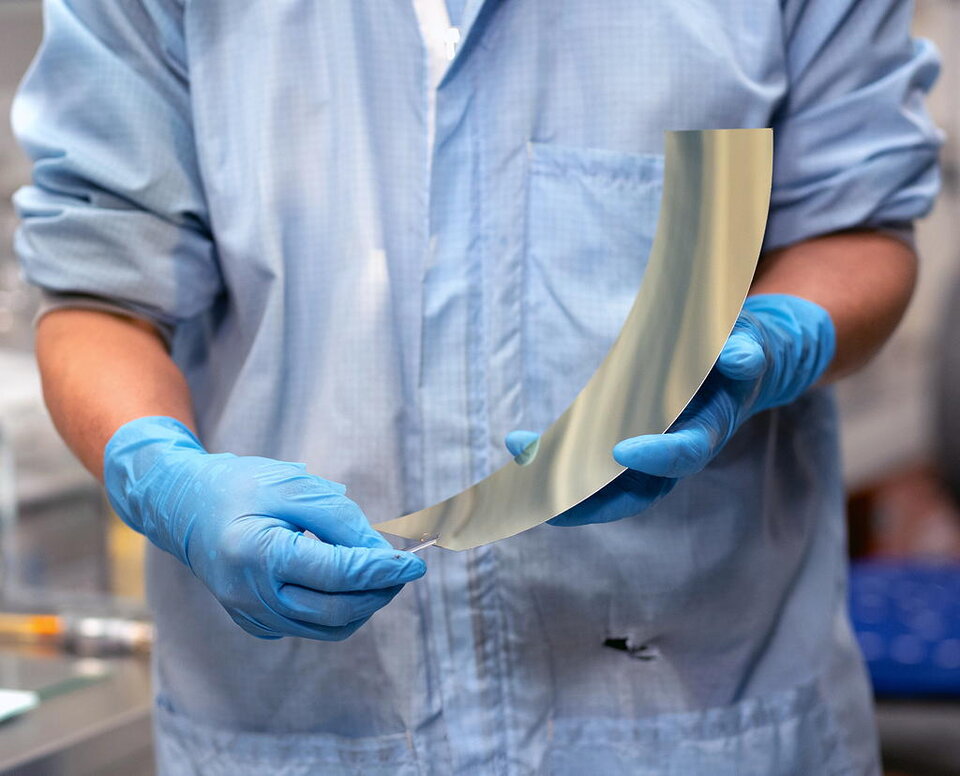
Journey and orbit: XRISM launched on 7 September 2023 on a H-IIA 202 rocket from the Tanegashima Space Center in Japan. The spacecraft is on a low-Earth orbit at a height of 550 km with an inclination of 31.0°.
Lifetime: Three years of operations until the cooling helium tanks run out. The helium is used to cool Resolve to its operational temperature of -273.10 °C. There are foreseen extensions with onboard mechanical coolers even without the helium coolant.
History: XRISM is the successor of the ASTRO-H (Hitomi) satellite, which was launched on 16 February 2016 but discontinued the operation on 28 April the same year due to a failure of the attitude control system. The last Japanese X-ray satellite, Suzaku, retired in 2015. The next-generation ESA X-ray observatory, Athena, is scheduled for launch in the second half of 2030s. XRISM will be the bridge between ESA’s XMM-Newton mission (launched in 1999) and Athena, enabling X-ray astronomers to make cutting-edge scientific discoveries.
XRISM mission facts
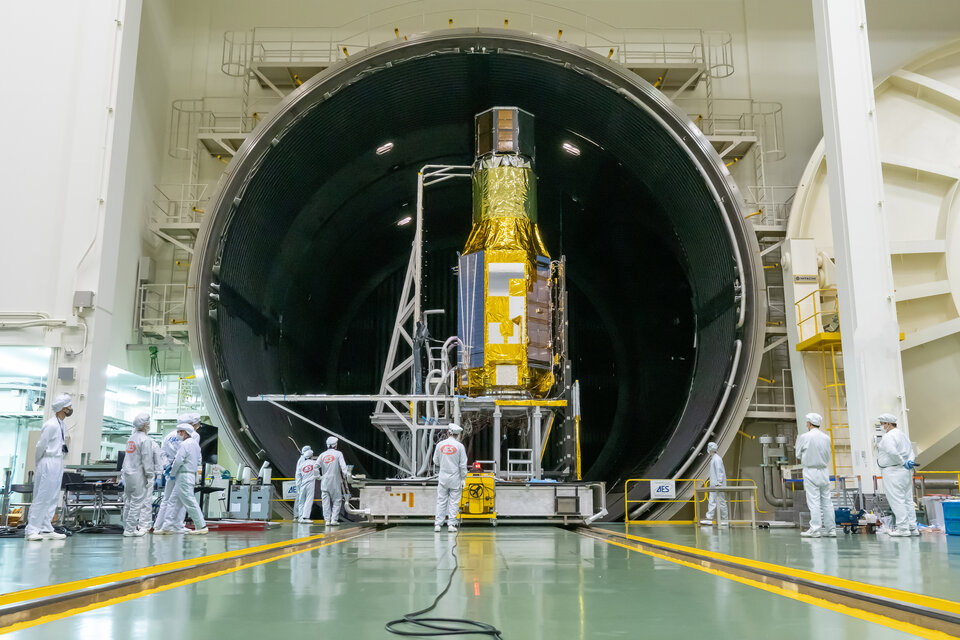
- Originally named XARM, X-ray Astronomy Recovery Mission.
- XRISM’s instruments are based on instruments of the ASTRO-H spacecraft.
- The spectrometric instrument Resolve has the best resolution of any similar operating instruments to detect x-rays.
- A team of more than 120 astronomers and engineers in the XRISM Science Team (about 10 from Europe) have collectively defined the plan for the first six months of the scientific observations – the so-called Performance Verification Phase.
- During the nominal operation phase the observatory will be open to the whole astronomical community worldwide.
- Scientists from European institutions will have access to 8% of the open observational time during the nominal science operations.


